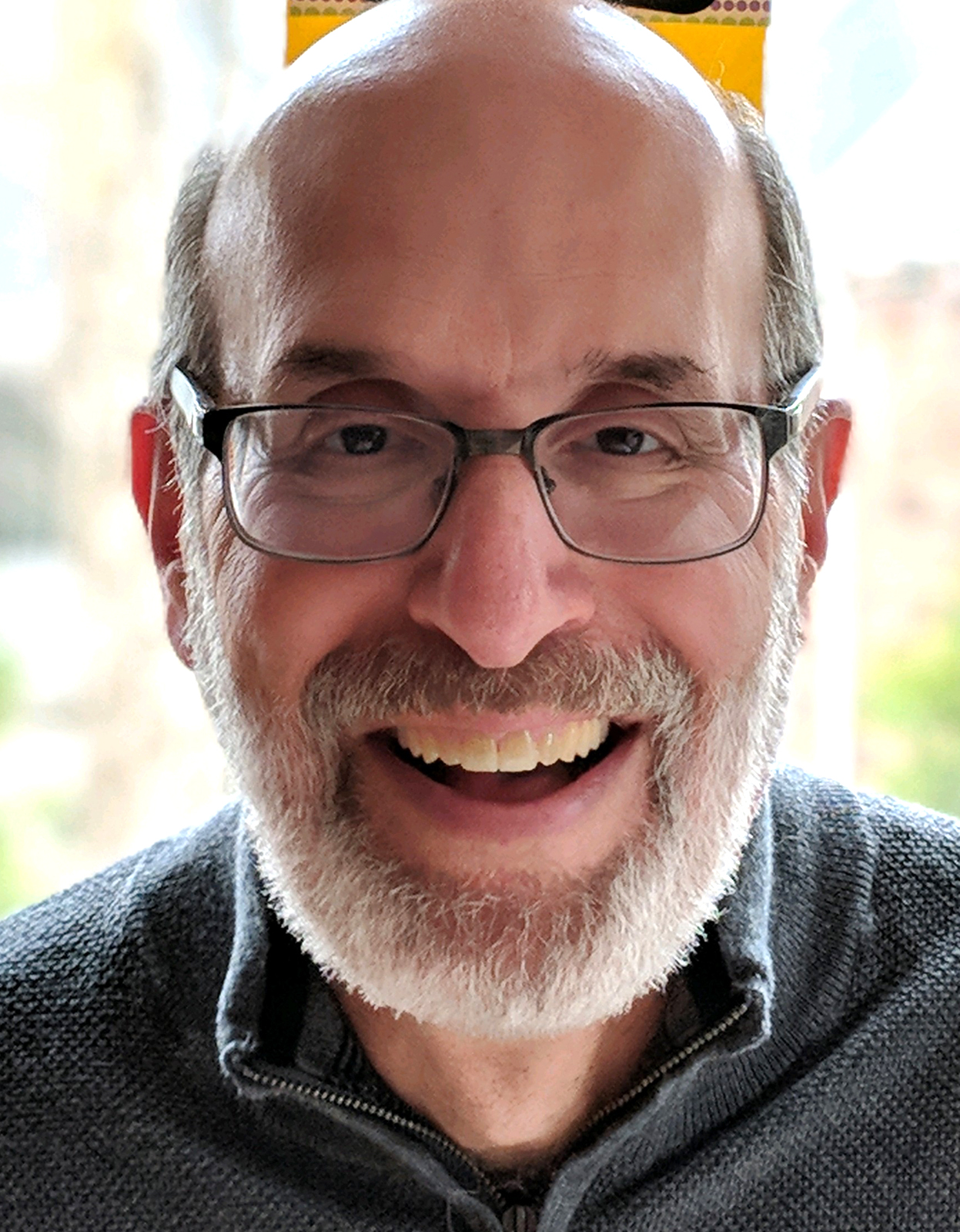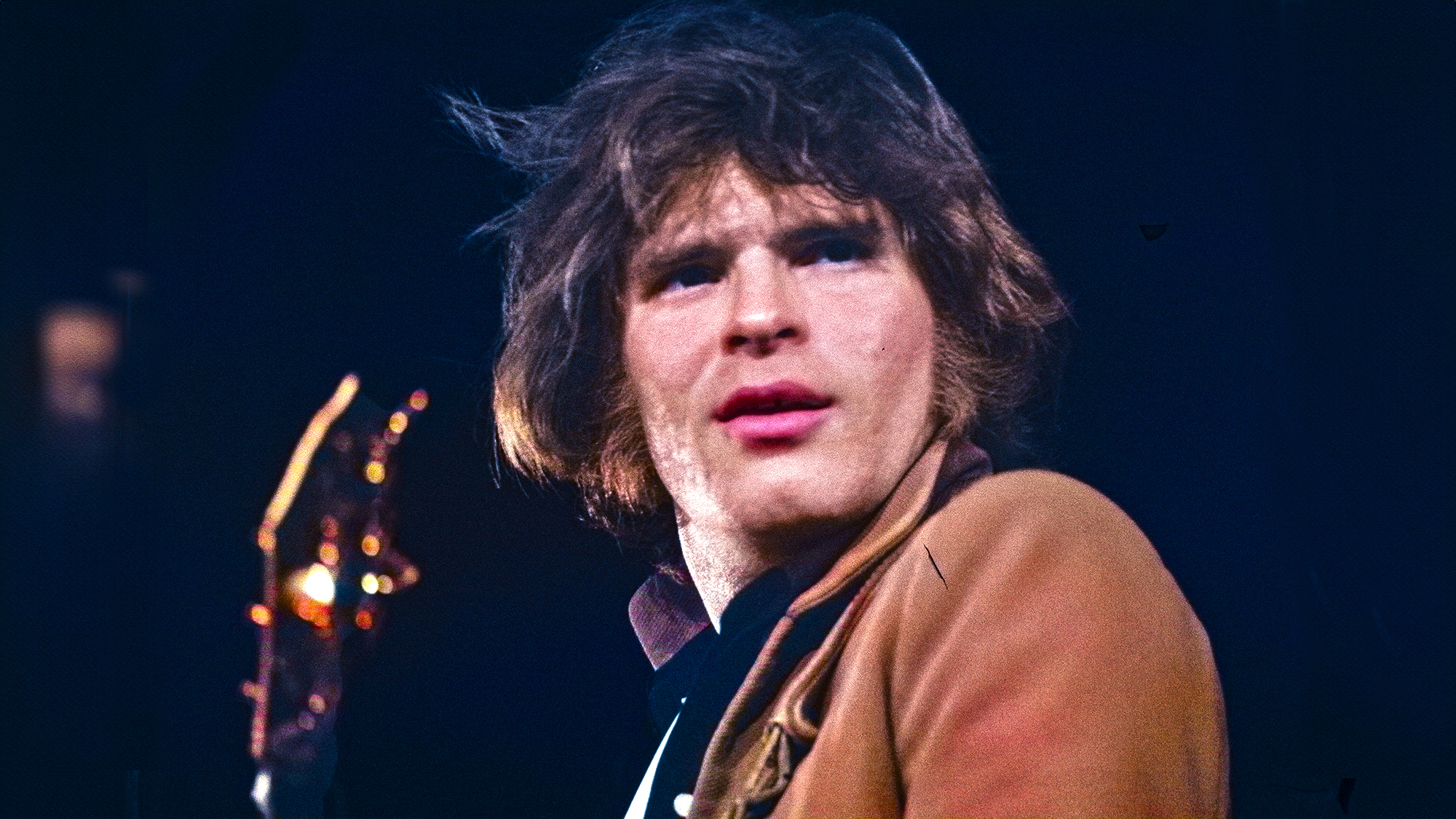"I stumbled upon the idea of using toy ray guns and putting them up to the pickups of my guitar." Steve Stevens explains the shocking techniques that made Billy Idol's 'Rebel Yell' a milestone for guitar sound design
Stevens says the 1984 release was a golden opportunity to revolutionize guitar in an era dominated by synths
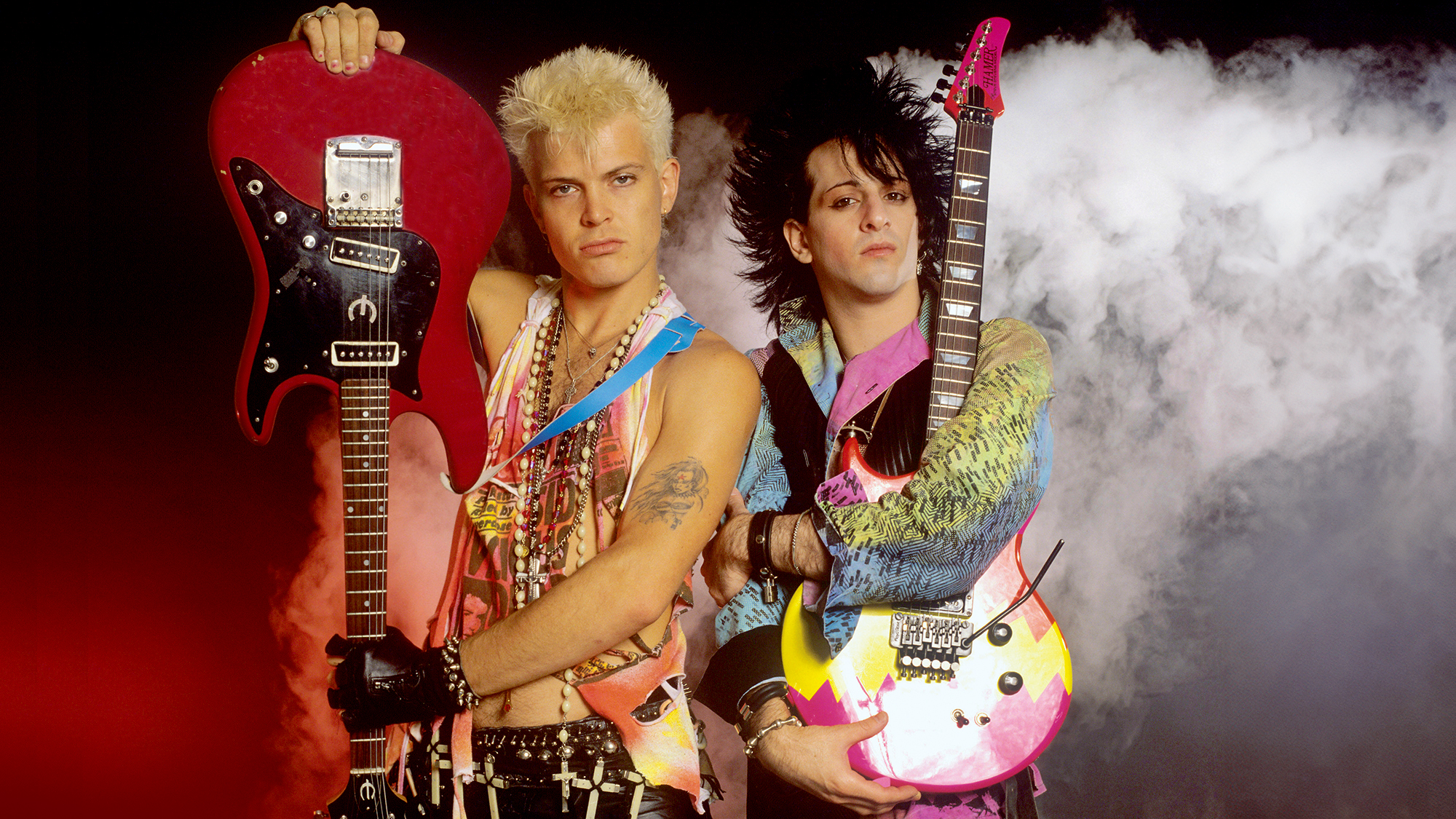
Growing up in New York — specifically in Queen’s Kew Gardens — a young Steven Schneider would go to see all-night rock and roll movies at the Eighth Street Playhouse in Manhattan’s Greenwich Village. Seeing The Song Remains the Same or The Kids Are Alright was cool, but what really caught the burgeoning guitarist’s interest was next door: Jimi Hendrix’s famed Electric Lady Studios.
“I remember telling my friend, ‘One day I’m gonna be next door recording,’” the man now known as Steve Stevens tells Guitar Player. “And I believed that. It was a real goal to me.”
Stevens achieved that goal in 1983 when he and Billy Idol set up shop with producer Keith Forsey to record Idol’s second solo album, Rebel Yell. Amid the murals, ghosts and “spaceship vibe” of the revered studio, they crafted an album Stevens considers “the basis of my now 42-year career with Billy.”
They’d had success with 1982’s Billy Idol album and its hit, “White Wedding,” but it was Rebel Yell that propelled Idol — and by extension Stevens, his co-writer and musical lieutenant — to super-stardom, a success they’re celebrating this year with a deluxe reissue that includes two unreleased songs, demos and alternate takes of other tracks.
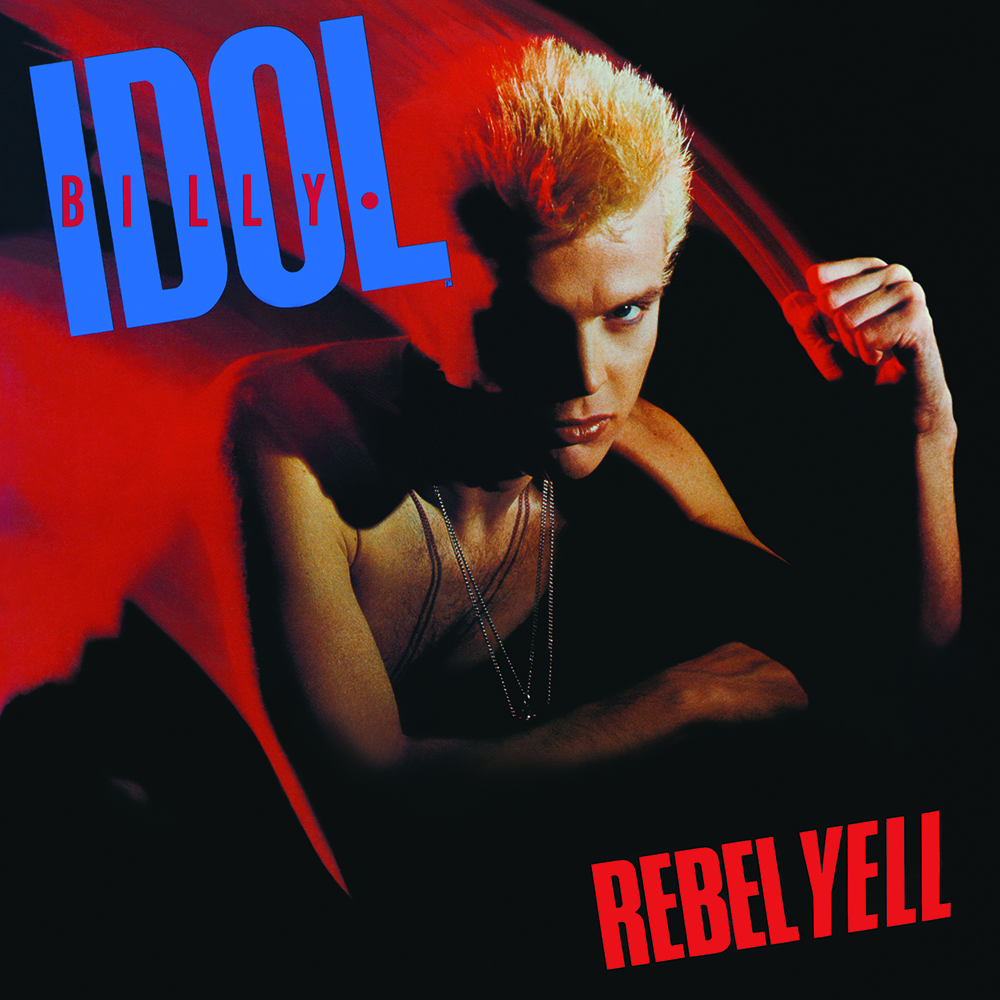
Rebel Yell’s statistics certainly speak to the album’s impact. It peaked at number six on the Billboard 200 and was eventually certified double Platinum, the best-selling album in Idol’s catalog. “Eyes Without a Face” was his first top five single, while the cuts “Rebel Yell,” “Flesh for Fantasy” and “Catch My Fall” also charted and, more importantly, were hits on MTV, putting Idol and a prominently featured Stevens in the upper strata of video stars killing radio, along with Michael Jackson, Duran Duran and Madonna.
“It really felt like we were part of some new movement,” says Stevens, whose own musical influences include similarly groundbreaking artists. “All this kind of new stuff was percolating, and the kids were coming to the shows all dressed up — not just as Billy Idol but Madonna or these other bands that were happening. It was really cool.”
It’s a long time ago, but the 64-year-old guitarist — whose many other credits include work with Michael Jackson, Ric Ocasek, Sebastian Bach and Derek Sherinian — remembers the making of Rebel Yell with tremendous clarity and illuminating detail during a lengthy blast back to a victorious past.
All the latest guitar news, interviews, lessons, reviews, deals and more, direct to your inbox!
What was the intention going into Rebel Yell? You guys were coming off a success. Did that generate pressure or excitement?
Even though it seems like “White Wedding” was a big success, the album didn’t go Gold initially. It did it on the back of Rebel Yell. But we spent about four months on the road promoting the first record, so the band was ready, and we went straight into pre-production. “White Wedding” was the last song to be recorded on the first record, so that really was the bar. We knew the follow-up had to be as good as that. And there’s nothing like knowing that what you do is gonna be heard, so we were pumped up about that. It was like, “Now we’ll show ’em!”
Were you writing Rebel Yell’s songs during the tour?
We didn’t write on the road. We wrote during pre-production. We were at a small studio on Third Avenue. There were two rooms, and the client in the other room was Miles Davis. I used to see him as I got off the elevator. I thought that was a pretty good sign, like, “Yeah, we’re in good company.”
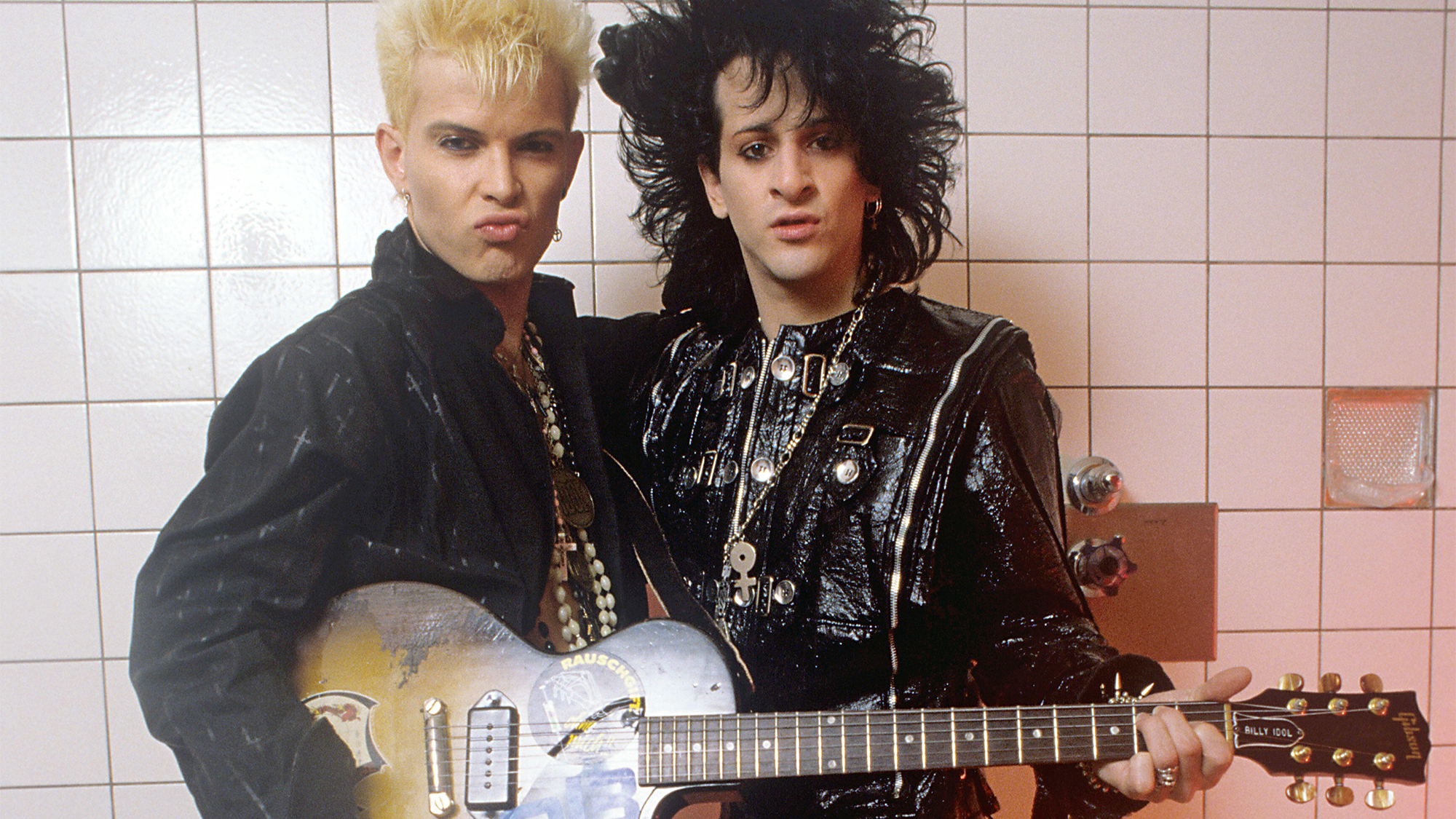
How had you and Billy evolved as a writing team between albums?
There’s no substitute for getting on the road and playing every night. And listening. We’d have these long bus rides after each gig, six or seven hours, so we spent a lot of time listening to stuff. We’d listen to a lot of Creedence, a lot of Doors, Suicide with Martin Rev and Alan Vega, Iggy [Pop]. We’d be like, “Yeah, it would be great to do something with that kind of energy and that vibe.”
How did you view your role in the music at that point? Billy was the artist, of course, but these were your songs, too.
Make no mistake: Billy Idol is the boss. It was his record deal, and it’s him on the cover of the albums. So there was no dispute about what I was there to do, and I think early on Billy knew that I didn’t have an agenda. But Billy was always very fair with the songwriting. If we were in a room together, it was 50-50, so I felt like I could put my energies into songwriting and almost look at the songs like a film director and not just as the guitar player who was gonna put guitar parts on a song.
Despite that, you wound up becoming a guitar hero during the early ’80s.
I never looked at it that way, ’cause so many of the guitar players that become “guitar heroes” had a specific style. But I always felt like I was a chameleon, that I could slip into different functions, because I love the instrument so much and I love all facets of it. My favorite guitar player and inspiration as a kid was Steve Howe, and Steve always looked at the guitar as, Well, I’m gonna put a bit of nylon-string guitar on here and then I’m gonna put a little bit of fuzz guitar there, then I’m gonna do a clean acoustic here...
He orchestrated the songs. I really identified with that, and I followed that throughout my whole career. I wanted to paint with the colors of the guitar. I’m definitely not of the Eric Clapton school, or Eddie Van Halen. They’re brilliant players, but I’m totally the opposite of that, and I think that’s what works for an artist like Billy Idol or some of the other artists I’ve worked with.
As we were getting into Rebel Yell, I remembered the Queen albums that said, “No synthesizers on here.” I thought, “I want to do that as well. We’re talking 1983, and every record in the world has synths on it. I remember saying to Billy and Keith Forsey, our producer, “Give me the opportunity to fill that space and that function with my guitar. If I fail, then bring in the keyboards, but I think it’ll be a much more unique recording if the sounds are made with the guitar.”
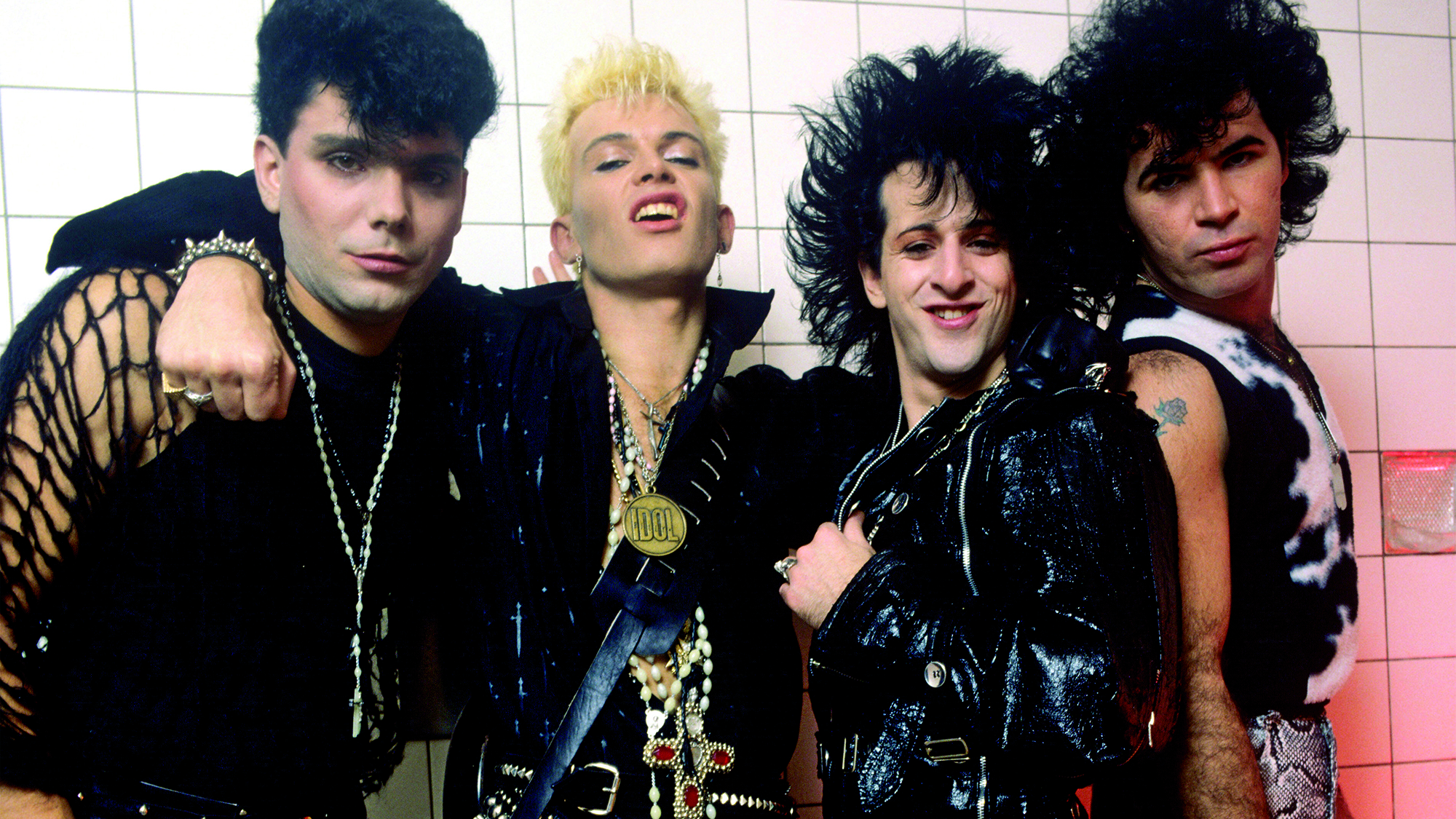
Did you get to play with any gear Hendrix left behind at Electric Lady?
[laughs] I wish! That was one of the first things I asked, “Is there any of Jimi’s stuff here?” There really wasn’t, but there was an amazing piece of gear from a French company called Publison [the DHM-89 B2 dual digital delay, pitch shifter and sampler]. People were starting to use Eventide Harmonizers and things on guitar, and I thought that kind of took away from the initial organicness of the guitar.
But the Publison, we would mix that in with my guitar and it gave it this sheen and energy. If you listen to Rebel Yell, you don’t realize it’s on the guitar, but I would say that piece of gear was on 80 percent of my guitar tracks. It was a harmonizer, but it was so subtle that it became an intrinsic piece of the guitar. And there was a lot of Lexicon stuff that was out at the moment.
And all of my guitar effects were on a pedalboard that I built. They were all Boss effects at the time [including the OC-2, a GE-7 Equalizer and a CS-2 Compression Sustainer], and I had a Roland Dimension D, which was used any time I had a clean guitar sound. Like “Flesh for Fantasy” — I used the Roland. These were all relatively new pieces of gear, so I felt like I could do something unique with them.
What instruments did you use on the album?
I went to Sam Ash on Queens Boulevard and I think I paid $699 for a Kramer Pacer that had a Floyd Rose on it, and that ended up becoming the guitar on the entire record. The tuning was great. Keith, our producer, was a real stickler for tuning and that thing was solid. He said, “You’re using that guitar! That’s in tune!” So most of the time it was that Kramer Pacer.
And I had one Marshall that I still own to this day. It’s a ‘72 [100-watt Super Lead] from the band I was in before Billy. I lived in this music building on 30th Street and I built the owner a pedalboard in trade for this amp and cabinet. What was cool about it was all these punk bands used to rehearse in his place, so that amp was played by all the guys from the Dead Boys and Johnny Thunders. It had a great pedigree to it.
How long did it take to make the album?
I would say with pre-production and recording, at least five months. I could be wrong; I’ve seen Billy do interviews where he said longer. I’m not good with time like that, but I consider from the time we went in to rehearse and write the tunes, about five months till we finished it. I remember I’d hang out a lot in the Village and go to clubs after the sessions, ’cause I didn’t want to go back to my parents’ basement in Kew Gardens. So I’d go to Danceteria or whatever and hang out and get home at about two in the morning. I think our sessions would usually start about noon.
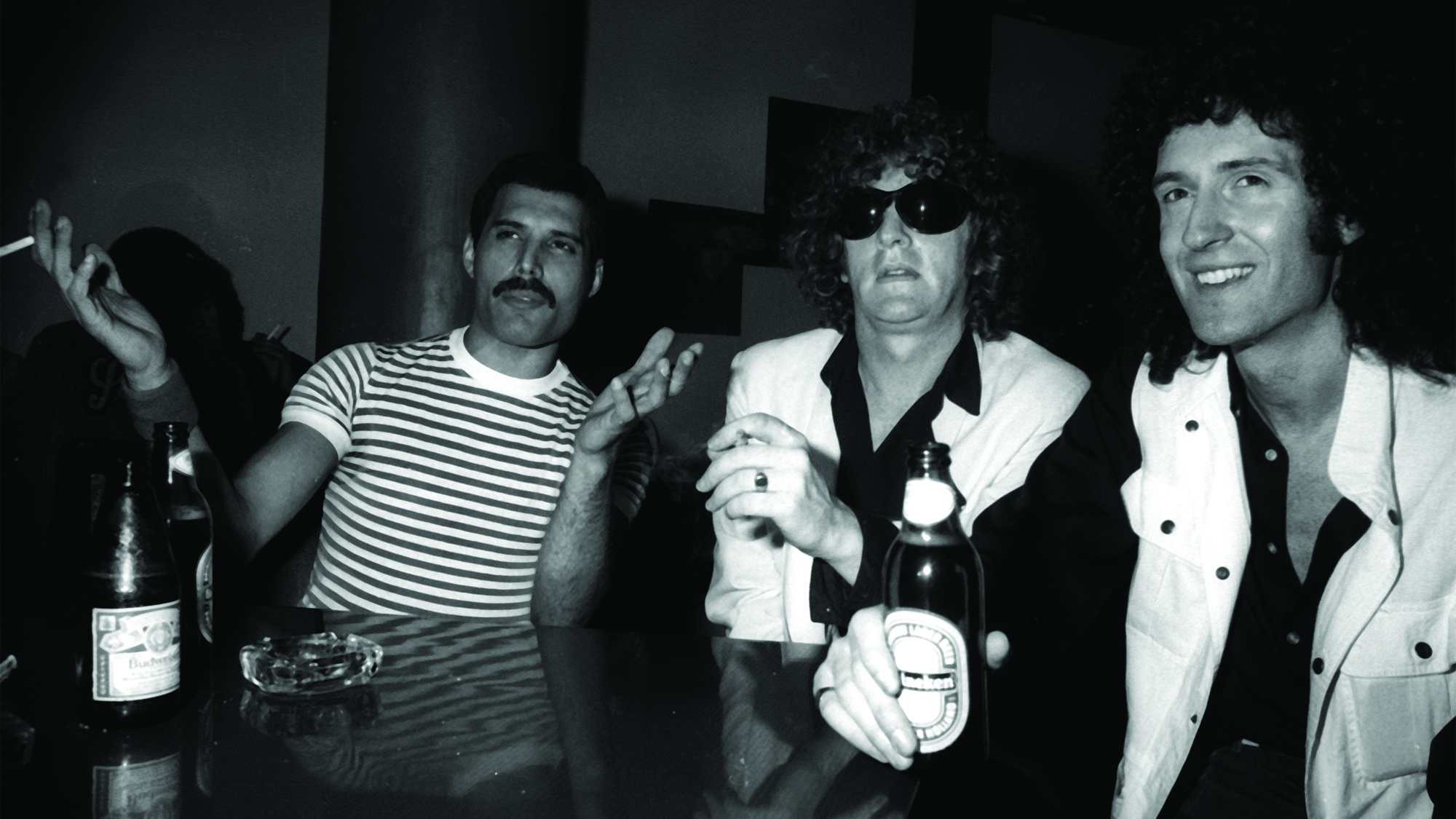
Did what you were hearing in the clubs impact Rebel Yell at all?
It was interesting. Every night I’d hear the extended versions of “Dancing With Myself” and “White Wedding” that we did, and that was great. I was thinking, Wait till they hear the new stuff.
Tell me about the song “Rebel Yell.”
There are definitely similarities between that and “White Wedding” — same key, similar structure. I remember Billy went to a birthday party with Ronnie Wood of the Stones, and he always tells me that they were drinking Rebel Yell, the Kentucky bourbon. We had some music and we were just mucking around and he came out with a legal notepad and said, “I think I’ve got the song, and I’ve got lyrics for it,” and then it grew from there.
A lot of the Billy Idol stuff usually traveled along on parallel lines when we’d write it, music and lyrics. It was very rare that we’d just come up with something musically and try to fit lyrics to it. It was always, “This is the concept, this is the song,” and the music has to fit the message and the flavor of the song. “Rebel Yell” certainly came from that.
When it came time for a guitar solo I remember saying to Billy and Keith that it can’t just be notes. I was adamant about that. It’s gotta explode. And I brought in the Billy Cobham Spectrum album and played them “Quadrant 4,” which was Tommy Bolin’s solo where he used the Echoplex, and I said, “We need something that’s got a sonic blast like that.” I didn’t want to copy it, but I eventually stumbled upon the idea of using toy ray guns and putting them up to the pickups of my guitar and manipulating it with a Lexicon delay. So conceptually it was this space-age gunfighter solo.
Where did the arresting opening riff of “Rebel Yell” come from?
That was the last thing that was recorded, because we said, “We need a flag. We need to let people know the cavalry’s coming.” I had that intro piece; it’s kind of like a fingerpicking thing. I had started out playing folk music and I was a big fan of John Fahey and Leo Kottke, and I wanted this kind of two-part guitar thing. And once I started doing it, it seemed to fit.
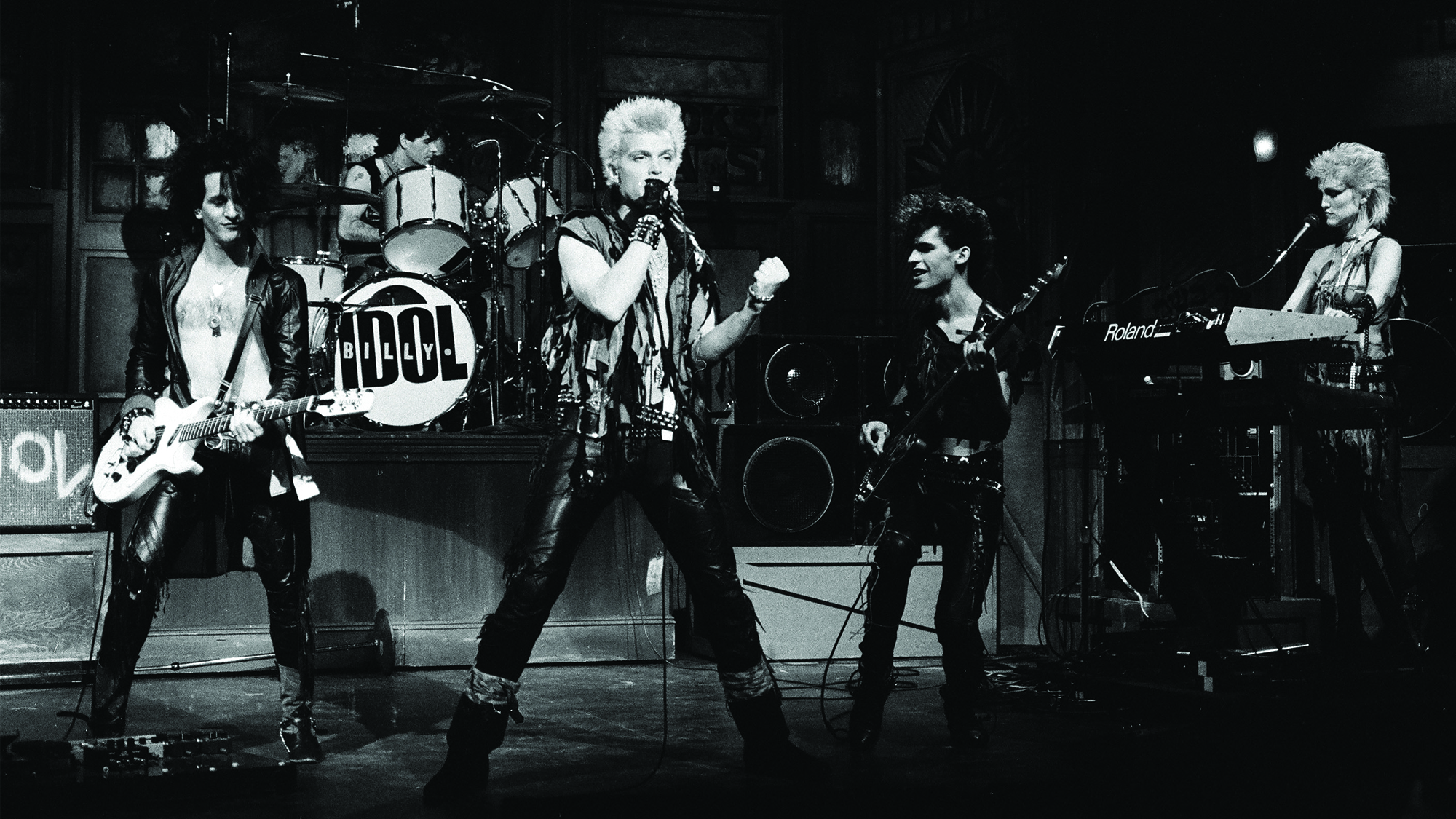
“Daytime Drama”?
Again, the lyrics were right there from the very beginning. I think Billy was watching these daytime soap operas — General Hospital, Days of Our Lives, stuff like that — because it was exotic to him as an Englishman. So lyrically, that was it. Musically, it’s about as far away from punk rock as you can get.
I was inspired by the groove and chord structure of “Heart of the Sunrise” by Yes — not the heavy riffing, not the King Crimson part, but the other part where that bassline just repeats and you have those Mellotron chord changes over it. That was the idea, although I did it on guitar. You had this stagnant two-bar bass line, but you had an eight-bar chord sequence on top of it — just a musical theory piece that followed that structure.
There’s some octave divider on the guitar on that, too. I wanted the guitar to really meld with that bass lines, so I used a Boss [OC-2] Octave on it, DI’d. And then at the end of each eight or 16 bars I would do a pick scrape into the Lexicon PCM41, and I had a foot switch which would hold it, so it was kind of like an early sampler, although it was only sampling a second or so. So there’s a lot of effects on there. I was really fortunate those guys allowed me to experiment, and that’s a prime example of it.
“Eyes Without a Face” was the big eyebrow-raiser, of course.
That was one of the tunes we came up with in pre-production. As I mentioned, I was living in the basement of my parents’ house. I had a little radio, and the only station I could get was CBS-FM, which was the oldies station. The chords on the song are very Frankie Valli, and I thought, Wouldn’t this be great? ’Cause Billy has a great kind of crooner element to his voice.
So I was mucking around, and I turned all those chords into sevenths — a major seventh, a minor seventh. And I was playing it, and Billy goes, “What’s that?” I said, “I dunno, it’s like some ’50s thing.” “Oh, I think I’ve got something for that.” He already had the main line “Eyes without a face.” There’s a French film with that title.
When we recorded it, we had the 32 bars open in the middle. I said, “This can’t just be a ballad. It’s got to explode at some point,” and I came up with the guitar riff in the middle and Billy did the quasi-rap thing over it.
I remember thinking early on, Can we get away with this? ’Cause it’s quite lush and all that. But we were both fans of the Beatles, and I remember we both said, “Well, look at a Beatles record. Every song’s a little different. They don’t have to all be the same, y’know.” We just followed our instincts on it, and then as we got some heavy guitar on it we were like, “Yeah, it belongs on the record.”
“Flesh for Fantasy”?
That was definitely our stab at Motown. Oddly enough, it started with a bass line, like a James Jamerson type of thing. I remember Hall & Oates had “Maneater” out at the time, and I always loved that. So we kind of turned it around, and then we got Steve Webster on bass and he played it beautifully.
Guitar-wise, I was definitely influenced by things like XTC, a little bit of Andy Summers — that clean echo chorus guitar that could lay on top of everything. I remember I saw the Police at the Hotel Diplomat [in New York City, in September 1979], just before their second album was released, and the way Andy played that clean, layered approach, that was definitely an inspiration for something like “Flesh for Fantasy.”
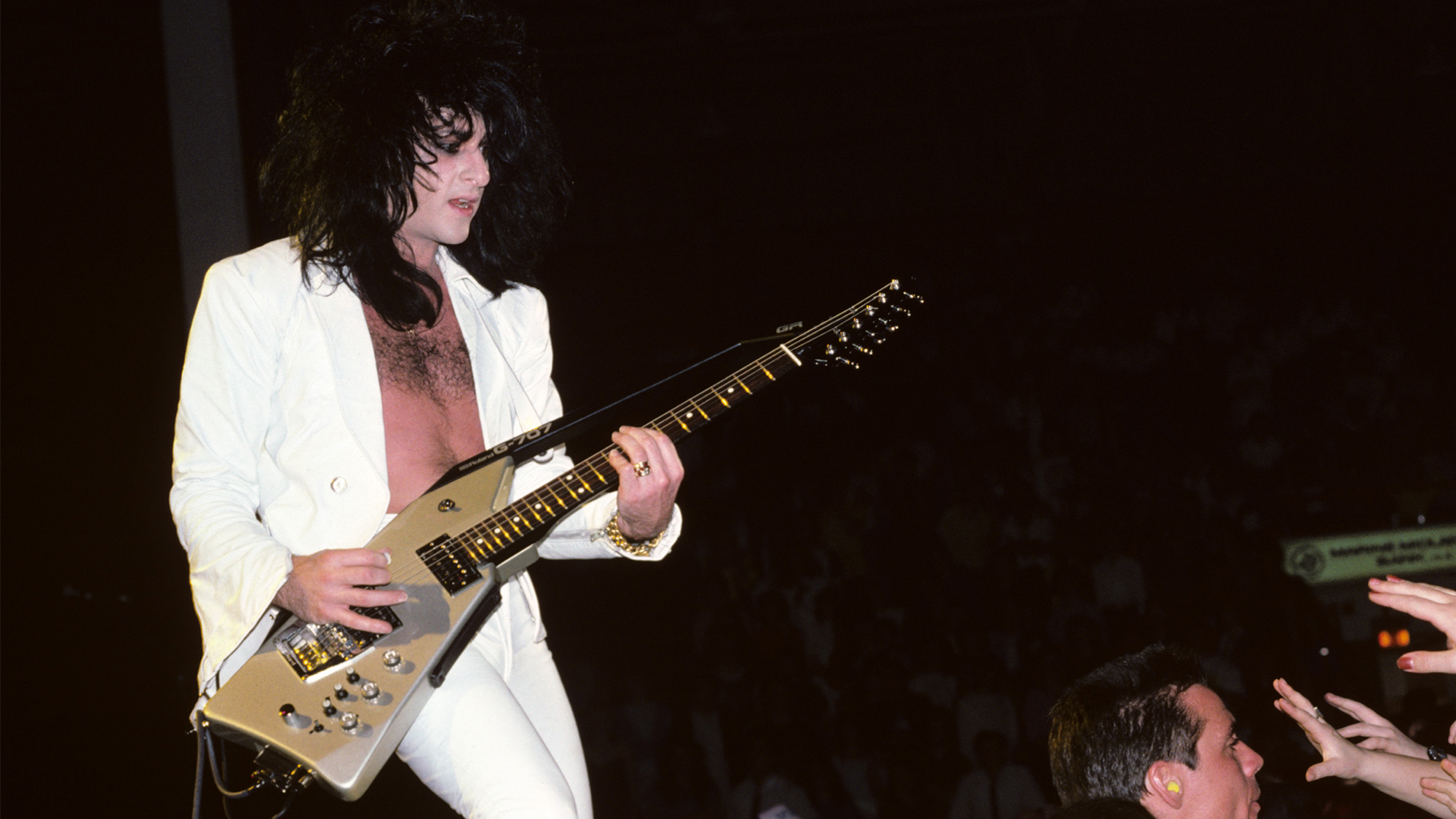
Steve Stevens introduced guitarists to the guitar synth when Roland gave him an exclusive to use the GR-707 (shown above) in the "Flesh for Fantasy" video. We went to the Roland factory and they brought us into a room, very secretive, and showed us this GR-707 with the foot controller and pickup,” Stevens explained to Guitar Player. “I started to play it, and we’re all like, ‘Wow!’ So we cut a deal with them. I said, ‘Look, if you let me bring this back to the States, I’ll put it in the next video.”
“Catch My Fall”?
Definitely 100 percent Billy Idol. He came in with that very complete, and it’s a three-chord pop song. Once again, there’s that intro with an almost Robert Fripp–like sustained guitar. I said, “Let’s not put keyboards on it. What do you feel about what Fripp did on [David Bowie’s] ’Scary Monsters’ or something like that — that sustain kind of guitar thing?” There’s definitely that influence.
“Crank Call”?
That was one of the last things, I think, to be recorded. It was inspired, groove-wise, by T. Rex. I think we were going for a very English kind of early ’70s kind of glam T. Rex or Sweet thing. Guitar-wise, it’s probably one of the simpler songs on the album, with the exception of the solo, which has the Lexicon PCM41 on it. You could do this weird little octave thing with the square wave on it, to make your pitch jump octaves. Once again, I was always looking for solos that would be out
of the ordinary, so that’s another one.
“(Do Not) Stand in the Shadows”?
That was an early one — might’ve even been before “Rebel Yell.” It’s got the triplet-delay guitar thing that Albert Lee was doing, that Andy Summers was doing on some of the Police stuff as well, and obviously The Edge too. We were all experimenting with those kinds of echo-delay things. It’s pretty close to one guitar track; there’s not a lot of layering on that one. It’s the closest to something that could’ve come on the first record. It sounds like a transitional piece to me.
“The Dead Next Door?”
That’s the Lexicon PCM41 on the guitar, DI’d again, with the square-wave delay setting. I remember we had to track everything to the tempo of the guitar track. I brought in a demo cassette I’d recorded at home and said, “I think I’ve got something. It’s really weird — not like a song. It’s like a tone poem or something.” Billy really liked it. He said, “Put the guitar down and track it and I’ll see what I can come up with.” So I orchestrated it and put some high mandolin-type guitars on it. It felt like a great way to end the record; I don’t think it could’ve gone anywhere but the last track on the record.
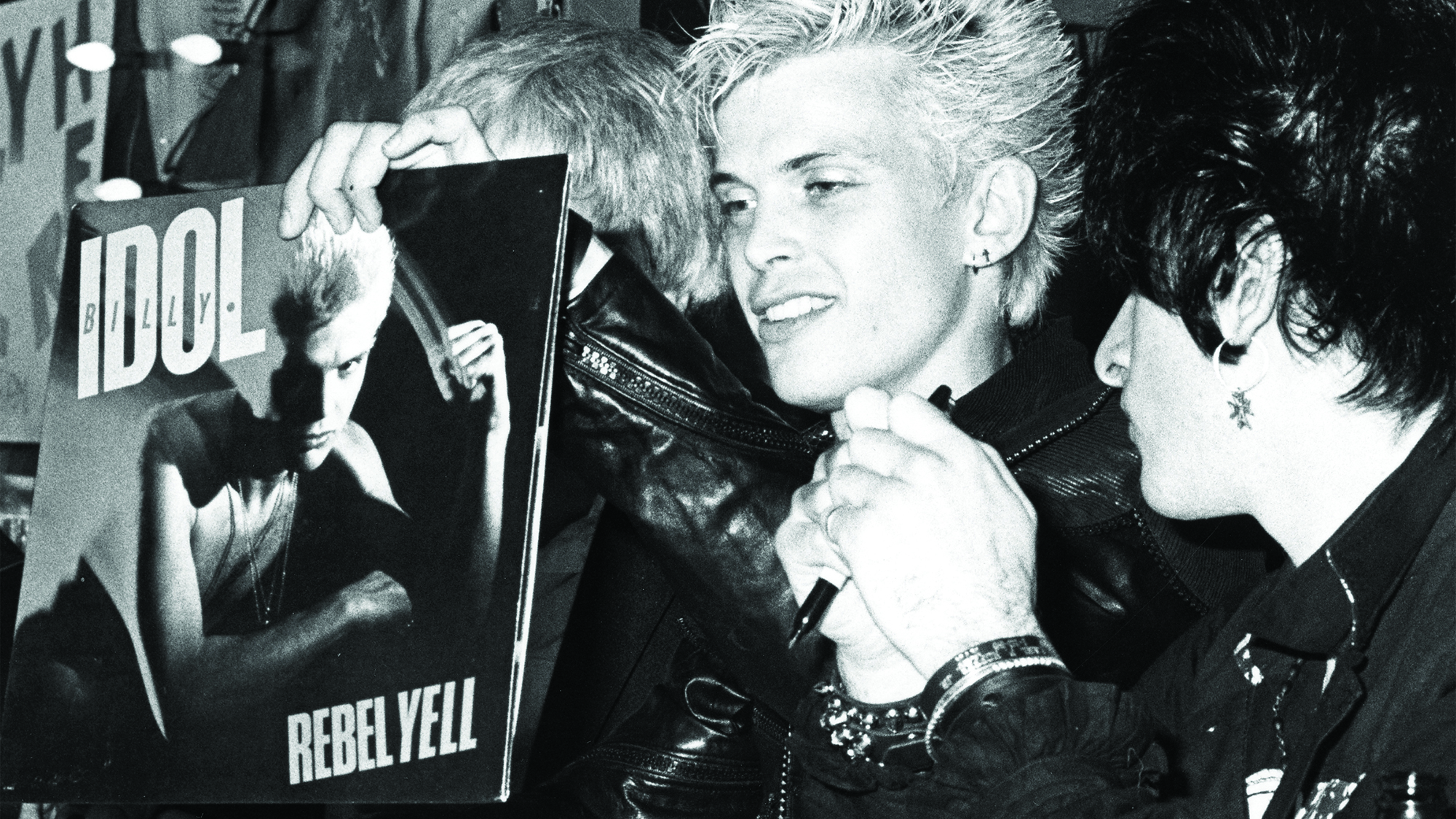
Did you know what you had when you were finished making the album?
Y’know, some things, why they work is still a mystery, and I love that. I think we were oblivious to the success of the record, which was kind of a blessing. Billy and I never follow chart positions or any of that stuff. We never looked at what we did as part of the music business. We were musicians. That’s kind of a punk-rock thing. So we started the tour to support the record in a bus, playing the same clubs we had done on the previous album.
I remember when we got to Los Angeles and played the Santa Monica Civic [Auditorium], this big place, we were like, “What’s going on here? I guess we’re doing all right!” And then we started to hear the album on the radio more and more, and obviously MTV was playing it. But I remember Billy getting really pissed when someone from the label said, “We’re pushing a lot of product.” He was like, “Don’t ever call it fucking ‘product’!”
Is the spirit of Rebel Yell in Dream Into It, your latest with Billy?
We still approach everything exactly the same. It’s two guys sitting in a room with acoustic guitars. You always start with, “What’s going on in your life?” — that kind of thing. “Are you having a good day?” “No, I’m having a shitty day.” “Let’s write an angry song, then!” I think there’s a maturity in that, because we certainly are not the same people we were in 1983, but we still love the partnership. And now we get to work with new people who grew up with our music. Our producer, Tommy English, is a young guy who’s a Billy Idol fan to begin with, so it’s a combination of us geezers and a bunch of young punks.
So we might get more, more, more?
[laughs] Some aspects of that are there, yeah. Once again, I’m still experimenting with the sonic capabilities of the guitar. I’m still that guy who’s putting acoustic guitars on things: nylon guitar, slide guitar... I’m always looking to orchestrate the song. I’ve never wavered from that. That’s my calling as a guitar player.
Gary Graff is an award-winning Detroit-based music journalist and author who writes for a variety of print, online and broadcast outlets. He has written and collaborated on books about Alice Cooper, Neil Young, Bob Seger, Bruce Springsteen and Rock 'n' Roll Myths. He's also the founding editor of the award-winning MusicHound Essential Album Guide series and of the new 501 Essential Albums series. Graff is also a co-founder and co-producer of the annual Detroit Music Awards.

